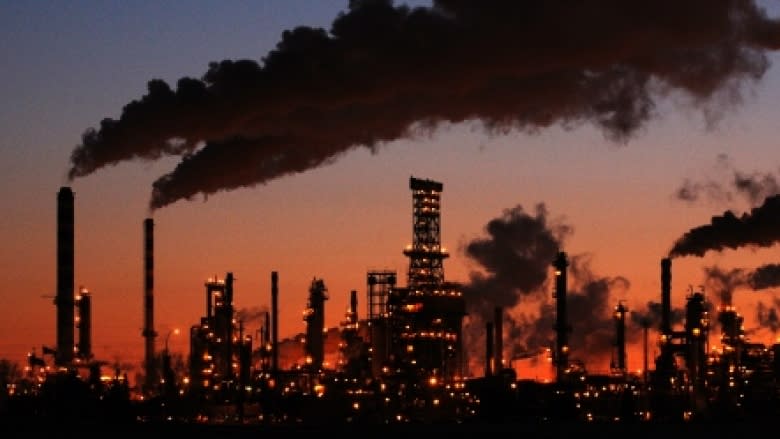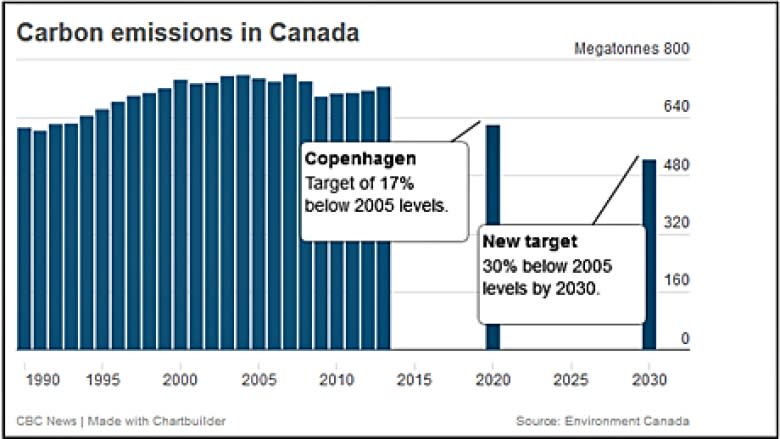Canada sets carbon emissions reduction target of 30% by 2030
Canada has announced it will commit to reducing its greenhouse gas emissions by 30 per cent below 2005 levels by 2030, an ambitious target made possible in large part by the success of the provinces in reducing their own emissions.
The announcement was made today in Winnipeg by Environment Minister Leona Aglukkaq.
"This target is fair and ambitious, an ambitious commitment based on our national circumstances, which includes a growing population, a diversified growing economy and Canada's position as a world leader in clean-electricity generation," Aglukkaq said in making the announcement.
Aglukkaq also announced new rules to reduce methane emissions from the oil and gas sector, such as industrial leaks and gas flares, which makes up a significant portion of the industry's total emissions.
There will also be new rules to control emissions from an electricity sector that is burning more natural gas, and new standards to limit emissions from the chemical sector, including from nitrogen fertilizers.
The federal government is also counting on low oil prices to keep industrial development — and its related emissions — lower.
And above all, it is counting on emissions reductions by the provinces, including a 37 per cent reduction below 1990 levels announced on Thursday by Ontario, to help meet its goal.
"Achieving this ambitious goal will require actions from all levels of government and we will continue to work together, cooperatively with the provinces and the territories' goals while respecting their jurisdictions," Aglukkaq said.
Aglukkaq said she will meet with provincial environment ministers in Winnipeg in June to talk about emissions reductions.
Environmental groups were quick to point out the proposed new targets would be achieved five years later than those proposed by the United States, and would move Canada to 14 per cent below 1990 levels. That would equal Japan for the weakest cut in the G7, according to Environmental Defence.
"Canada's opening pledge for the Paris climate summit is the weakest in the G7, and will further cement Canada's global reputation as a climate laggard," the group said in a release.
The Climate Action Network noted the government's plan focuses methane and nitrous oxide emissions rather than the main greenhouse gas, carbon dioxide, and does not include regulations on the oilsands, which it calls the fastest-growing source of emissions.
Carbon credits needed?
Sources say Canada will have to buy international credits to get to its goal. Those credits invest in green projects in other countries and balance out rising emissions in Canada. That's something the Conservative government had vowed not to do in the past, with former environment minister John Baird calling them "hot air credits."
The 30 per cent target will come as a surprise to many environmental groups, who noted that Canada is not on track to meet even its existing target to reduce emission by 17 per cent below 2005 levels by 2020.
"What we have put forward today is a serious target and, very clearly, ... we will still require work to get reducing our targets and we're determined to do that," Aglukkaq said when asked about trend on Friday. "We want to do our part as a country and an international community in reducing greenhouse gas emissions and today's target and timeline demonstrates that."
European leaders agreed in October to reduce emissions by at least 40 per cent compared to 1990 levels. And the U.S. has set a target of 26 to 28 per cent below 2005 levels by 2025.
While Canada has traditionally linked its targets to those of the United States, the prime minister announced earlier this year that would not be the case. But, Stephen Harper told reporters, Canada's targets would be in line with its partners.
Canada is required to release its emission targets for the G7 conference in Germany early next month. That meeting is in preparation for a crucial climate conference being held in Paris at the end of the year, where almost 200 countries will pledge their plans to cut carbon emissions over the next decade and beyond.



